
|   |

|   |
24th Acharya Chaube Maharaj Mahotsav - Anupma Sharma e-mail: anupma.anuphd@gmail.com March 18, 2018 Kala Kriti Kendra presented Naman, the 24th Acharya Chaube Maharaj Mahotsav, as a musical tribute to Sitara Devi. The Nirtya and Sangeet Samaroh was held on 24th & 25th February 2018 at Bhavan's Cultural Centre, Mumbai. The event commemorates the invaluable contribution of the legendary dancer, who had an illustrious career spanning eight decades. An undisputed star performer, Sitara Devi was a small woman with a forceful personality that gave an edge to her signature movements as a Kathak artist. Besides her own personal genius and grace in performance, she was a pioneer who was dedicated to spreading the beauty and message of this classical art form, even during an era when women were restricted from performing in public. Her mission took her all over the world and brought students and performers to the fore, leading to the vibrant community of Kathak dancers today. The Mahotsav plans to move across different cities in India to mark her historical journey. The Acharya Chaube Maharaj Mahotsav has hosted several erstwhile maestros that include Anup Jalota, Ustad Ahmed Hussain, Muhammad Hussain, Ranjit Barot (son of Sitara Devi), Dr. Soma Ghosh, Pt Rajendra Gangani, Fazal Qureshi, Vishal Krishna to name a few. 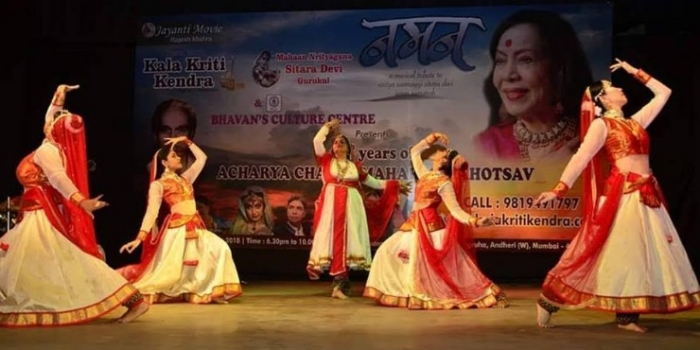 Students of Kala Kriti Kendra Naman began with an invocation to lord Ganesha that was performed by underprivileged children who are tutored at the Kala Kriti Kendra. Saraswati vandana, an ode to the goddess, was a traditional rendition laced with todas in between the shlokas performed by the students of Jayantimala Mishra. This year the festival brought to the fore, the talented Pt Ram Mohan Maharaj from Delhi, guru of the Kalka-Bindadin Gharana of Kathak and son of late legendry Pt. Shambhu Maharaj. He began with uthaan followed by tihai, a magical count of numbers that mesmerised the audience. His enacting of lord Krishna playing the ball to the beat of Taka taka deeg deeg takeet dheeket dhata dhata dhaa ta dha dha dha dha with his friends was a treat to the eyes. His depiction invoked a spiritual element transcending Radha to be the ghungroo and Krishna resonating the musical notes. He presented several beautiful compositions that included Lord Ram in gat bhav, the walk of a snake and the act of stealing butter by little Krishna. The expressions brought alive the presence of a small child on stage bursting into tears on being caught in the act by Yashoda. The Bindadin Maharaj ki Holi to the tune of Dekho holi ke khilaya kaise ban ban aaye, kau nachat kau latkat matkat brought the colours of Holi to life. The stage came alive with the entry of Jayantimala Mishra to the tune of Om damak dam damroo baje; her energy was vivacious, movements were precise and expressions of the eyes were enthralling. The ambience was coloured Sufiana by Ustad Ahmed Hussain, Muhammad Hussain who sang ghazals in the good old classical style that evening. Their notes in perfect synchrony left the crowd spellbound. 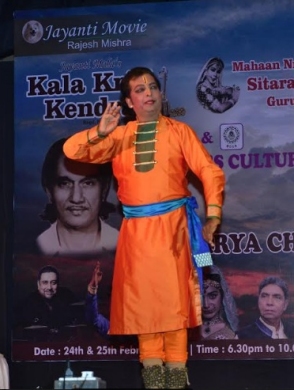 Pt Ram Mohan Maharaj 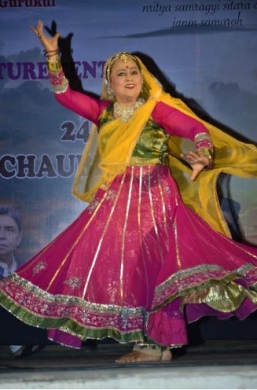 Jayantimala Mishra 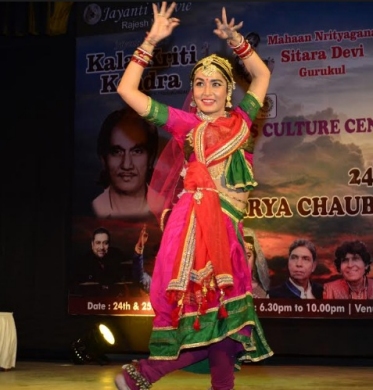 Rishika Mishra 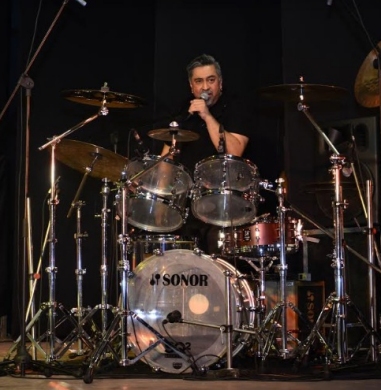 Ranjit Barot The Navadurga act by Rishika Mishra was impressive, portraying the fervour of the goddess with fiery eyes ready to kill the demons. This was followed by a rendition of Angikam Bhuvanam by Rajiv Ranjan Jha, a disciple of Late Pt. Balram Lal, Dr. Madhukar Anand and Pt. Ram Mohan Maharaj. He presented the paran judee amaad, shringarik thaat and talwar ki gat with poise and fervour. There was an added zest to the performance by the interactions of the musicians that included Pandit Kalinath Mishra on tabla, Somanth Mishra on vocal, Sangeet Mishra on sarangi and Aparna Deodhar Gujar on sitar. The rhythm for the dance pieces in the form of jhannj, bells etc. was by Ravi Kishan Mishra and the host Rajesh Mishra and Archana Vadnerkar interwove the aesthetics of the pieces beautifully. The pinnacle was the drum ensemble led by Ranjit Barot who was accompanied by Ashwin Srinivasan on the flute and vocals. Ashwin's recital was measured and encompassing the flute and vocals with ease. It was an astounding fusion of rhythm and classical notes. Truly Naman was a mark of respect to Sitara Devi by all the artists in this two day festival. Anupma Sharma is a Research Scientist in Biology and has been trained in Kathak dance by late Pandit Brijraj Mishra. |